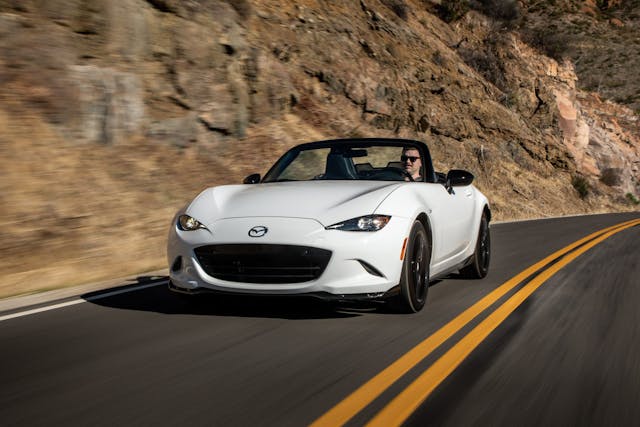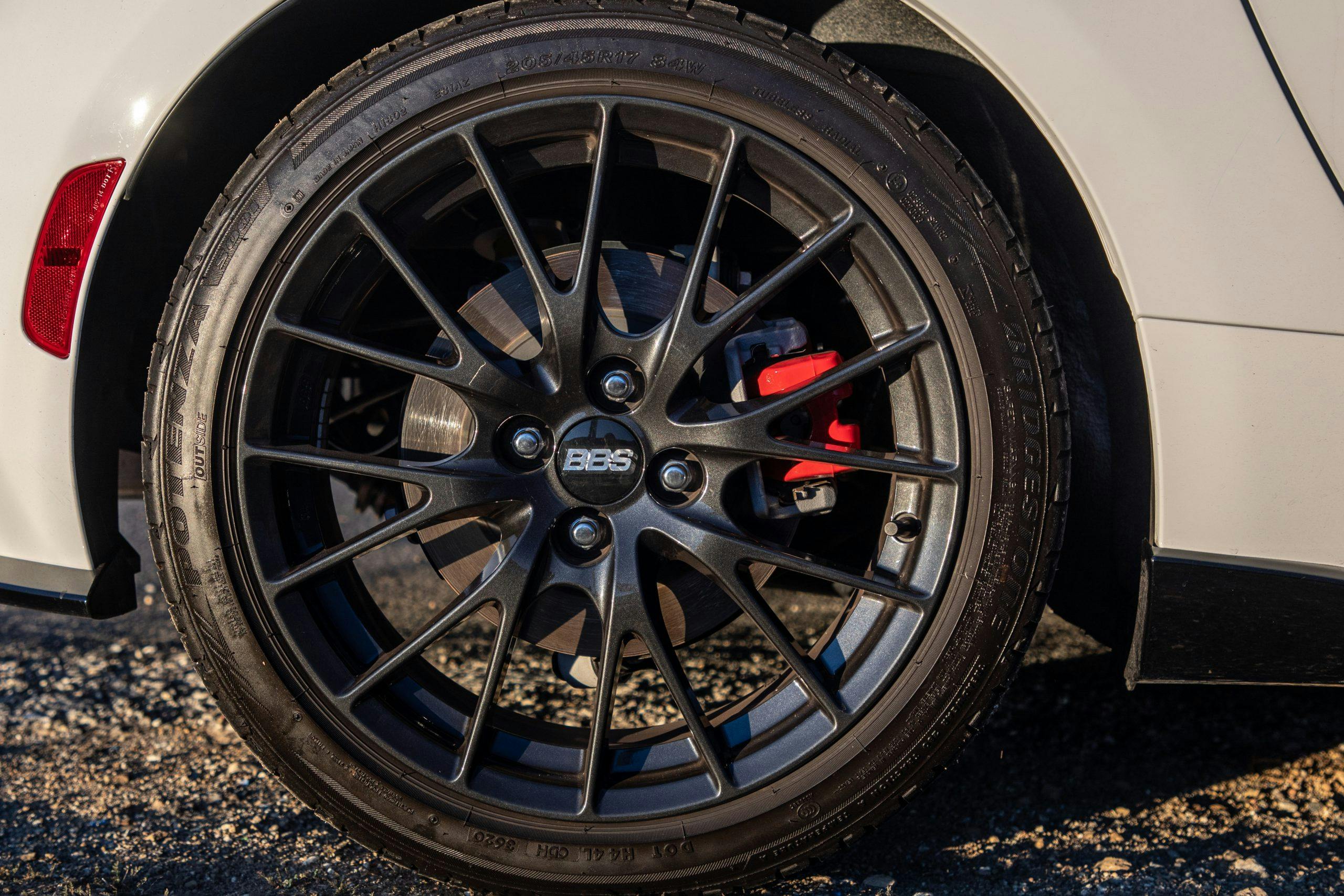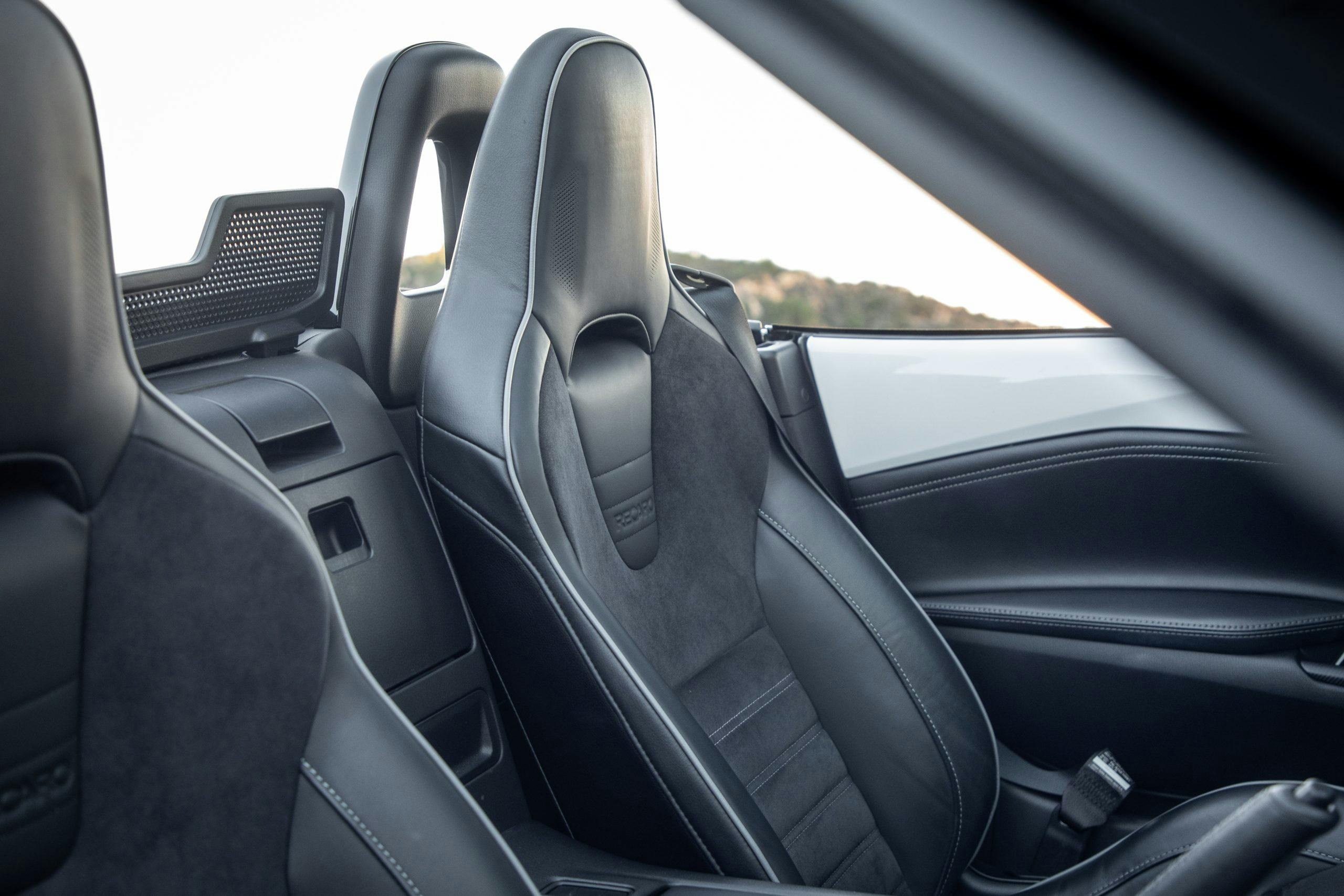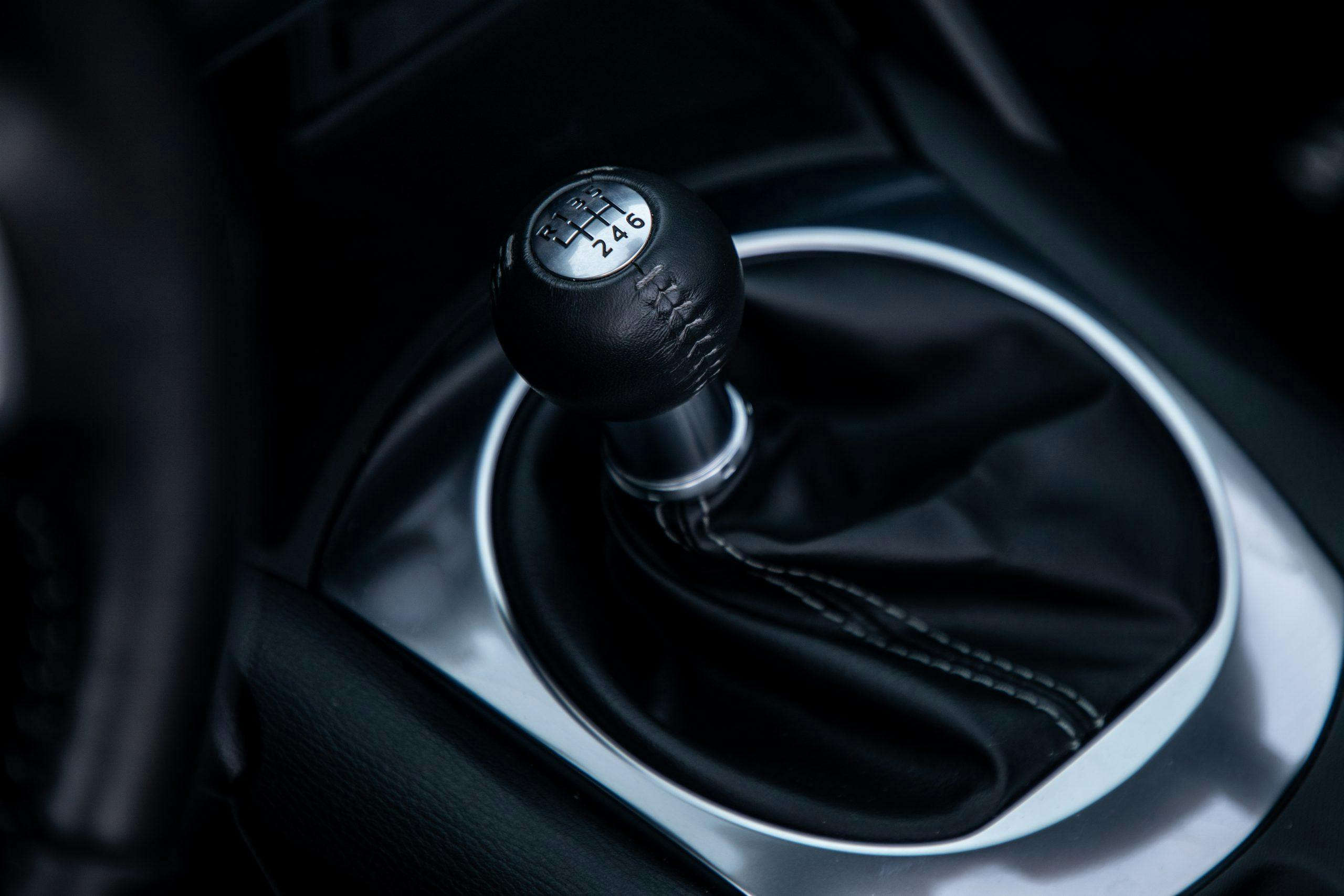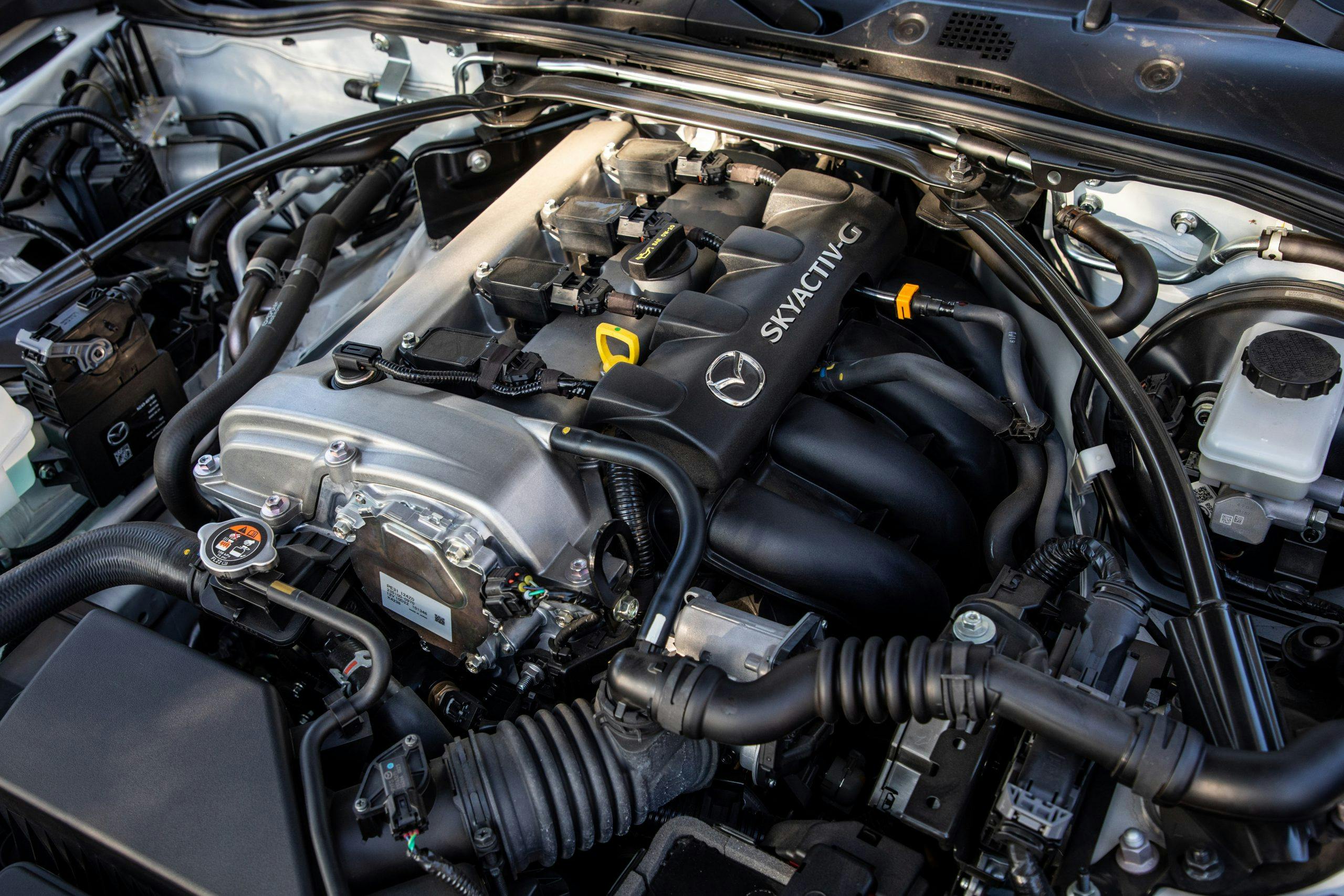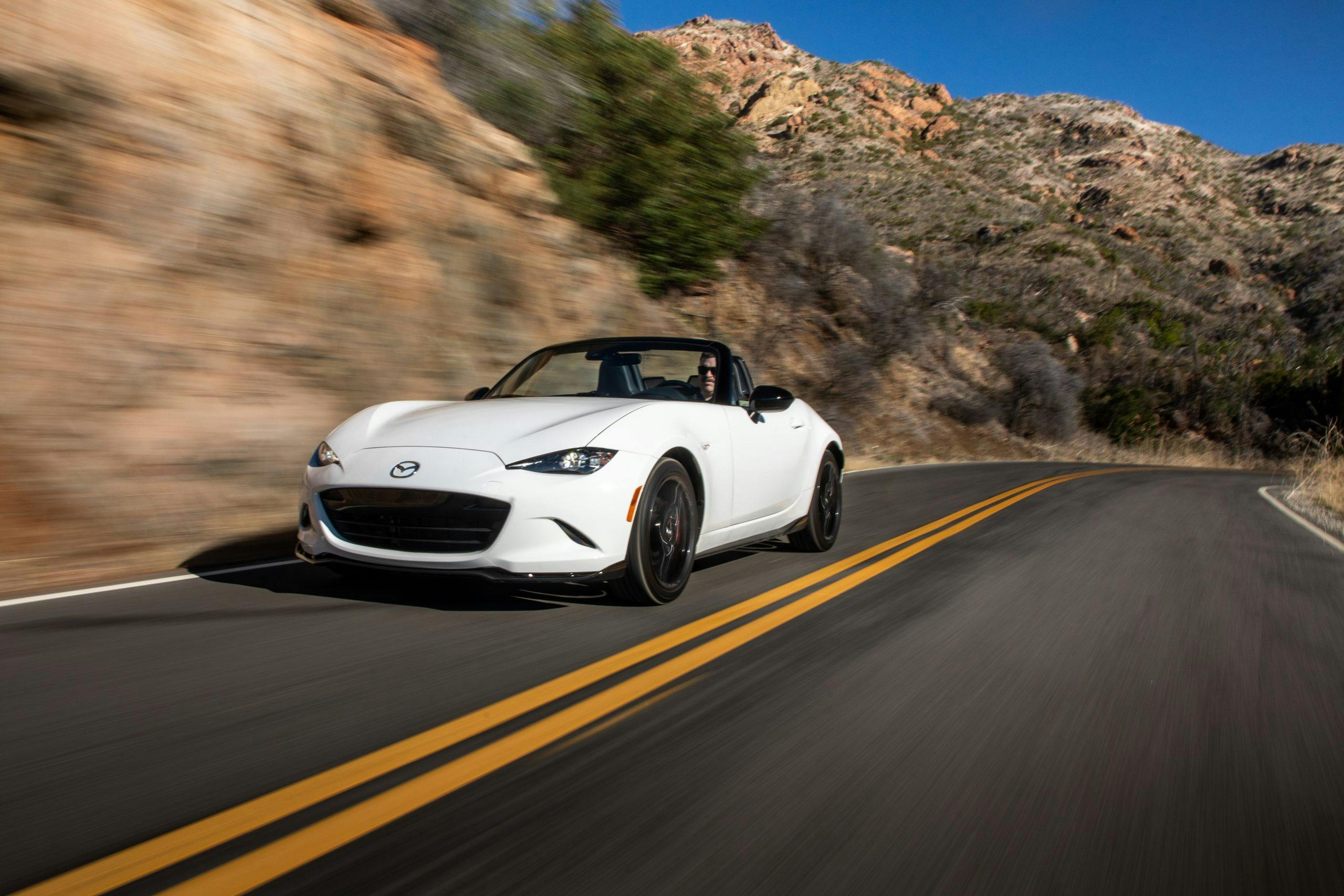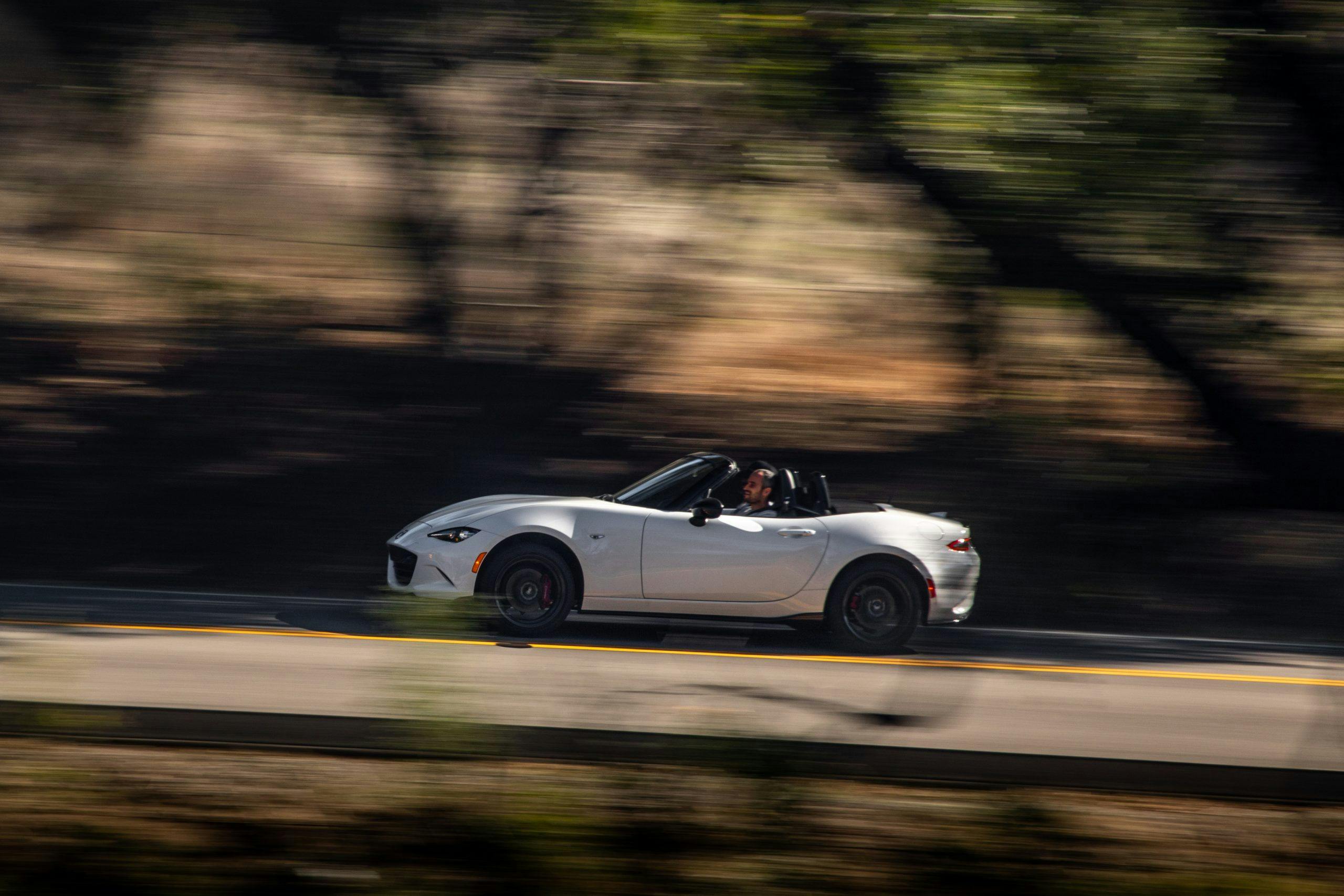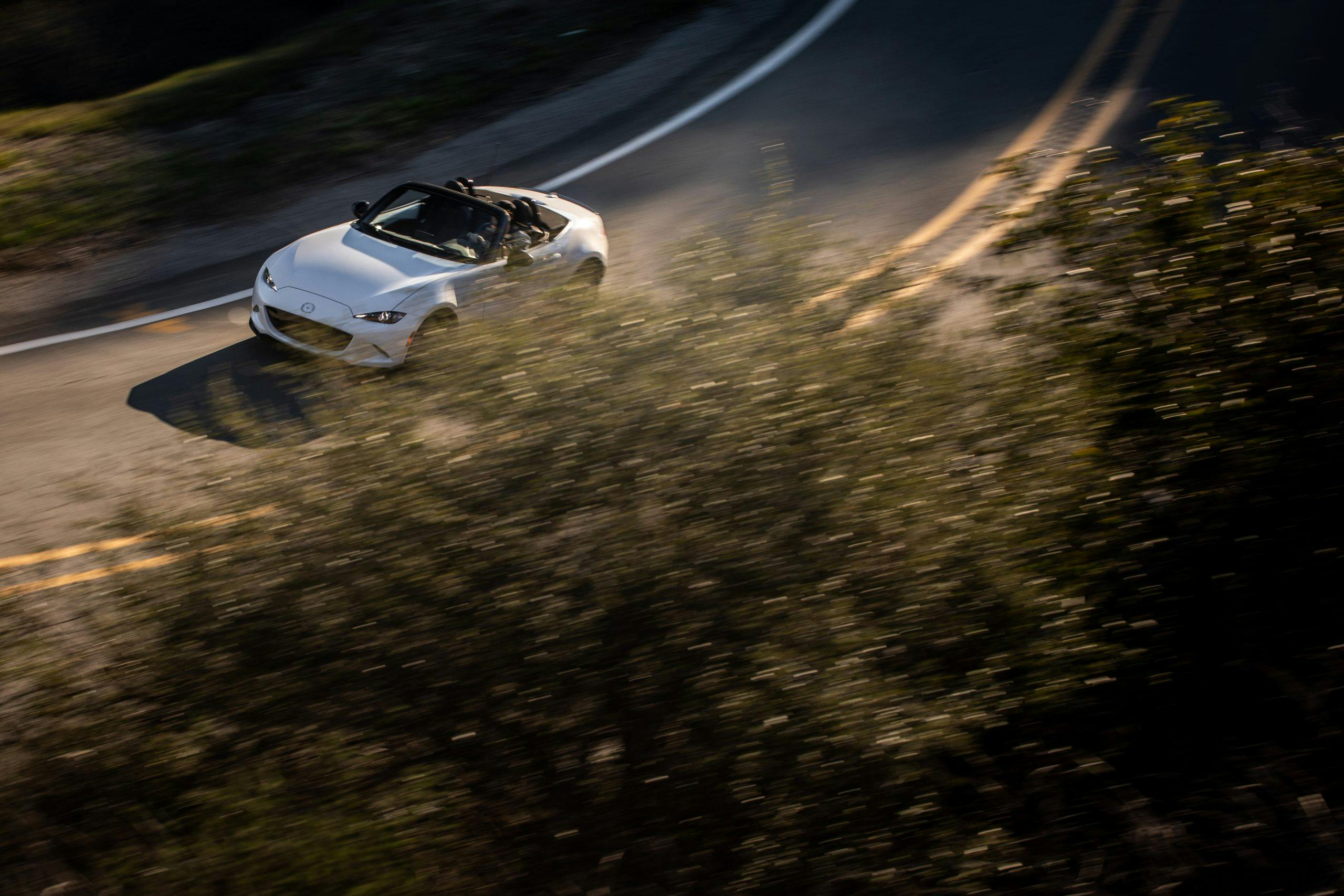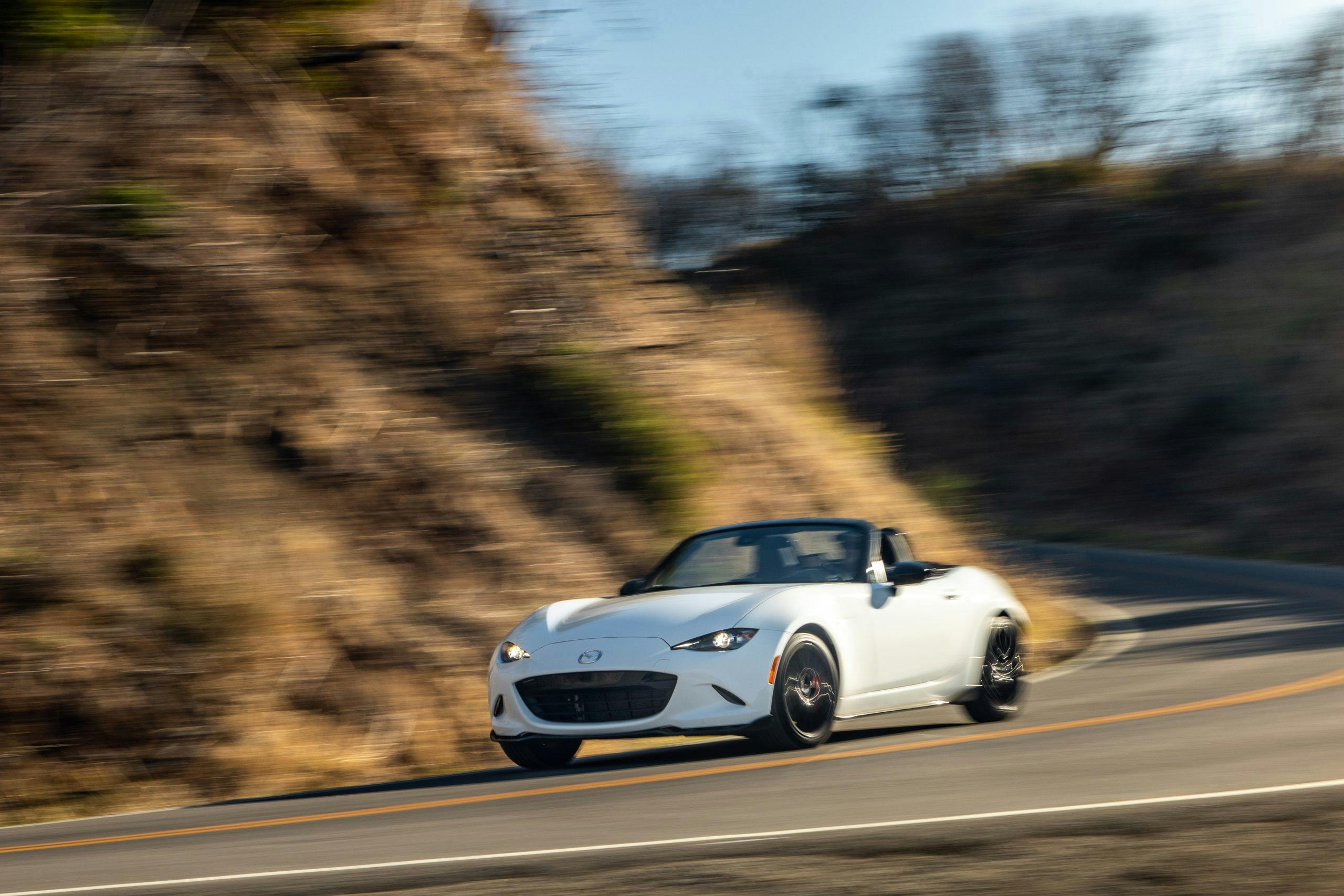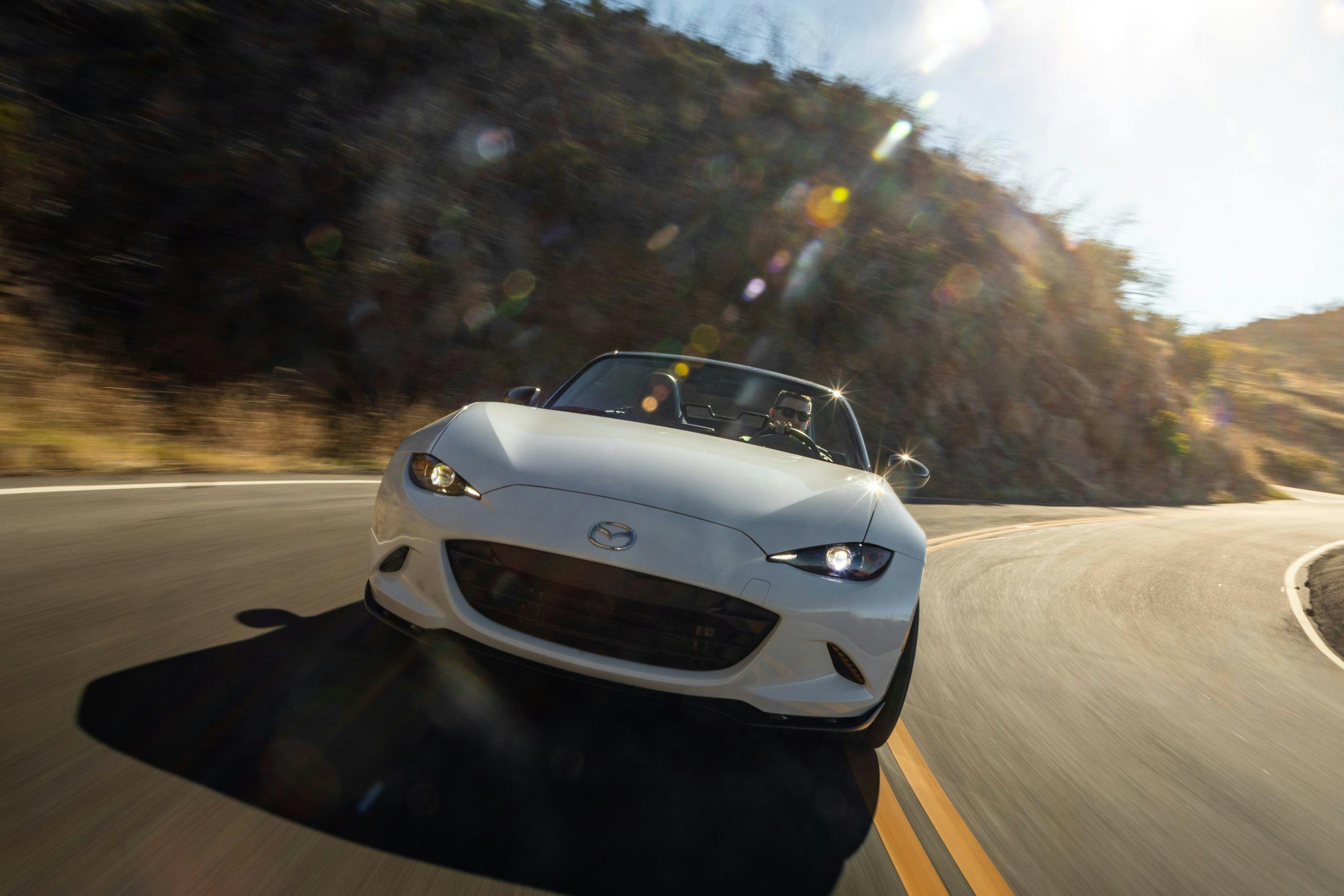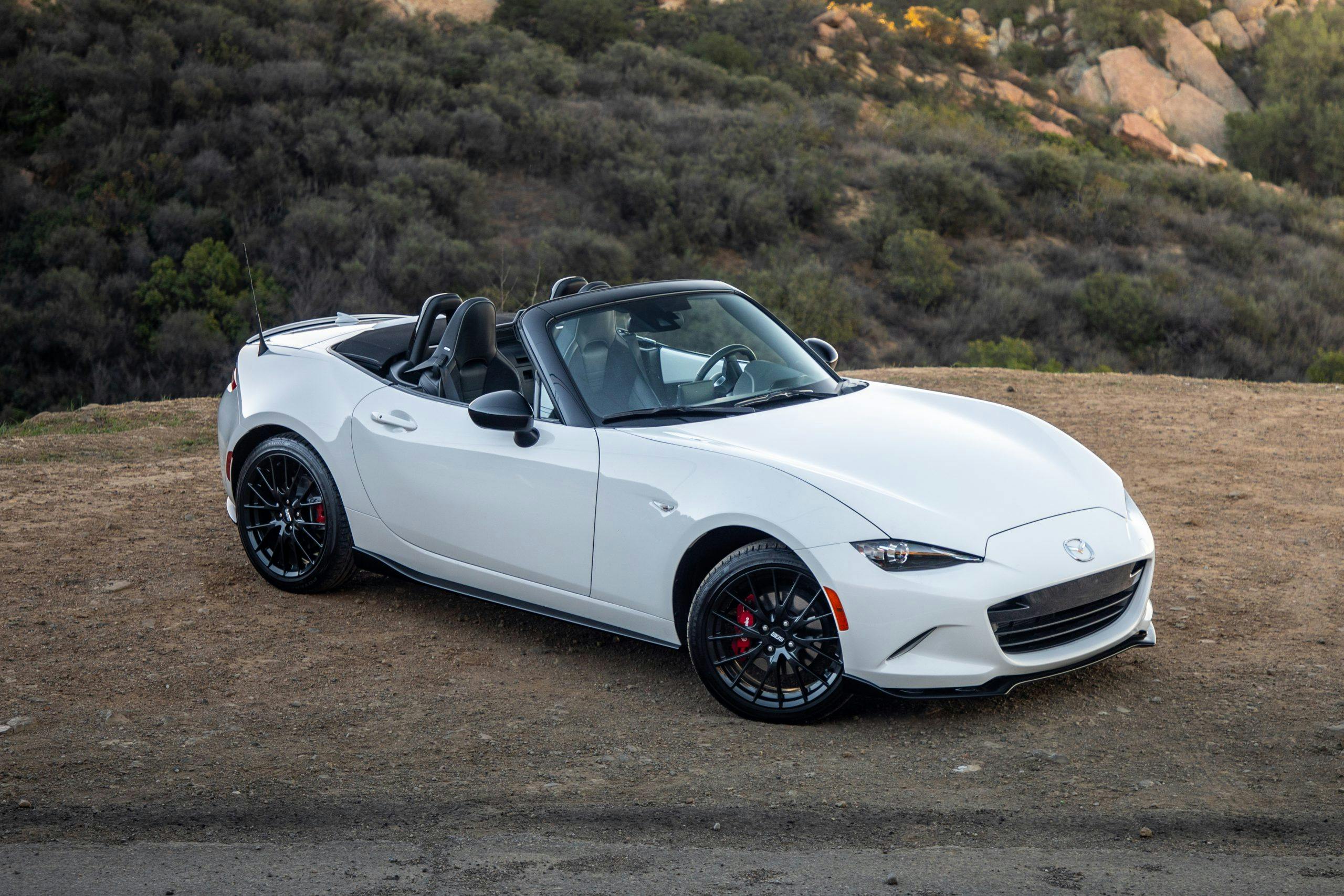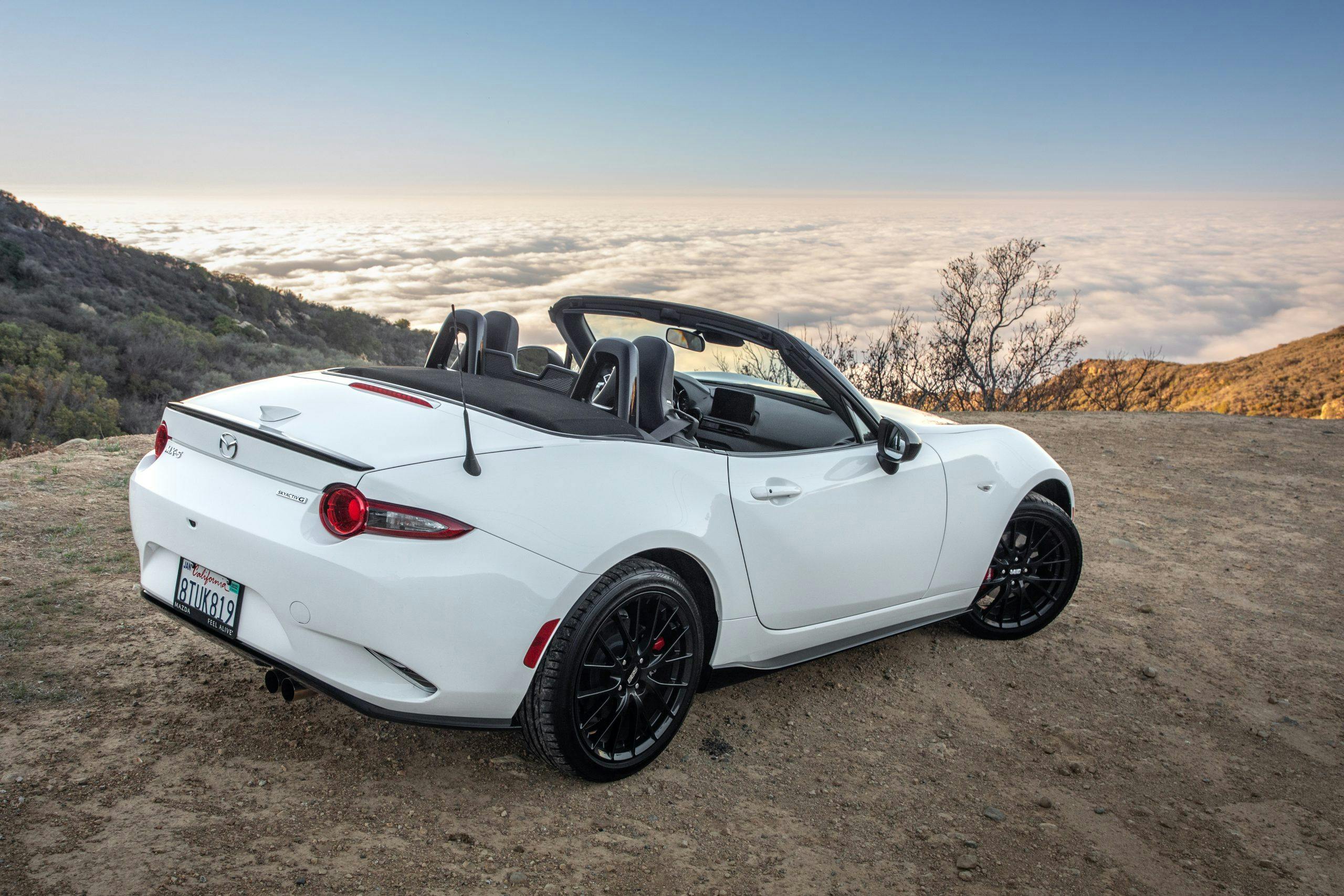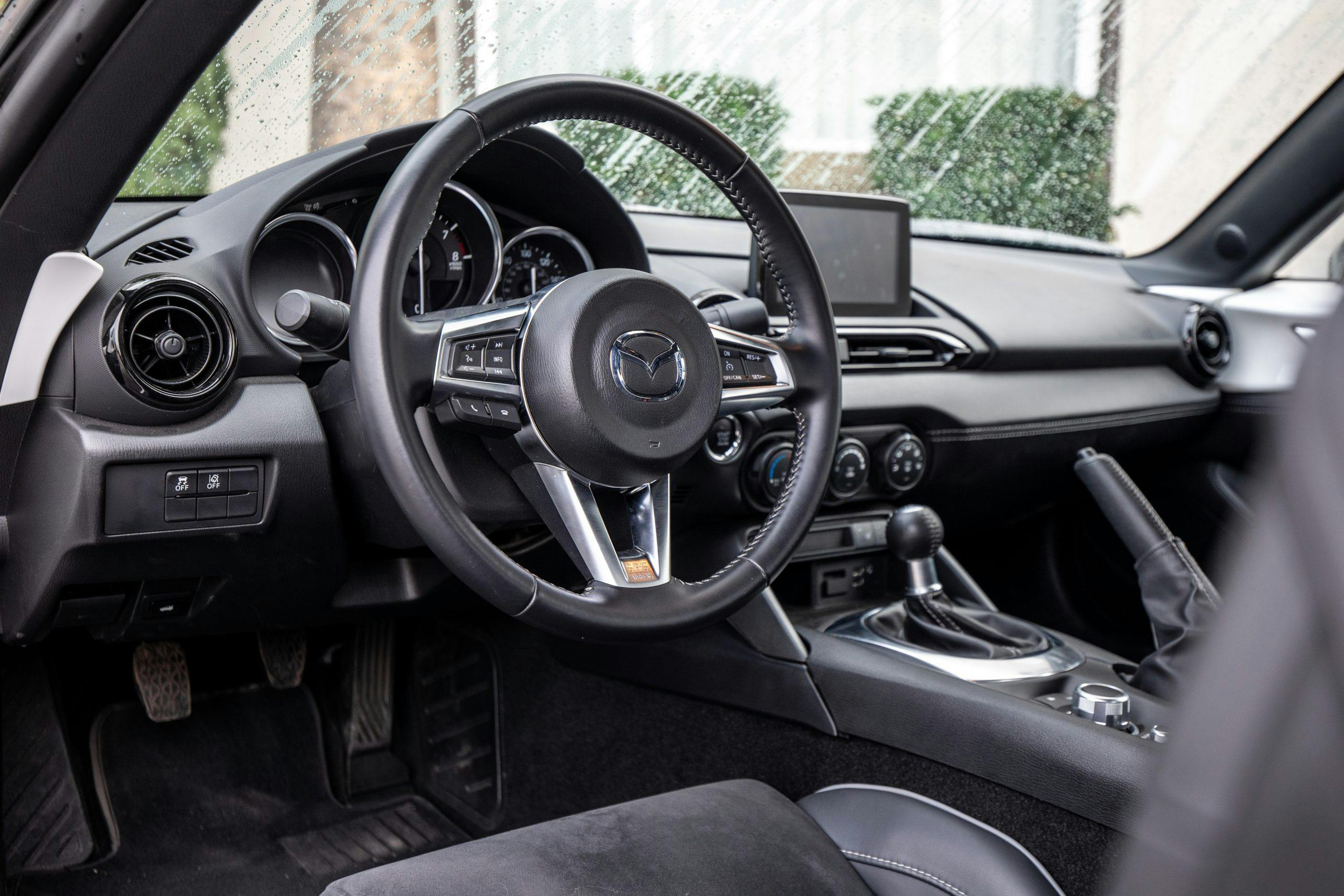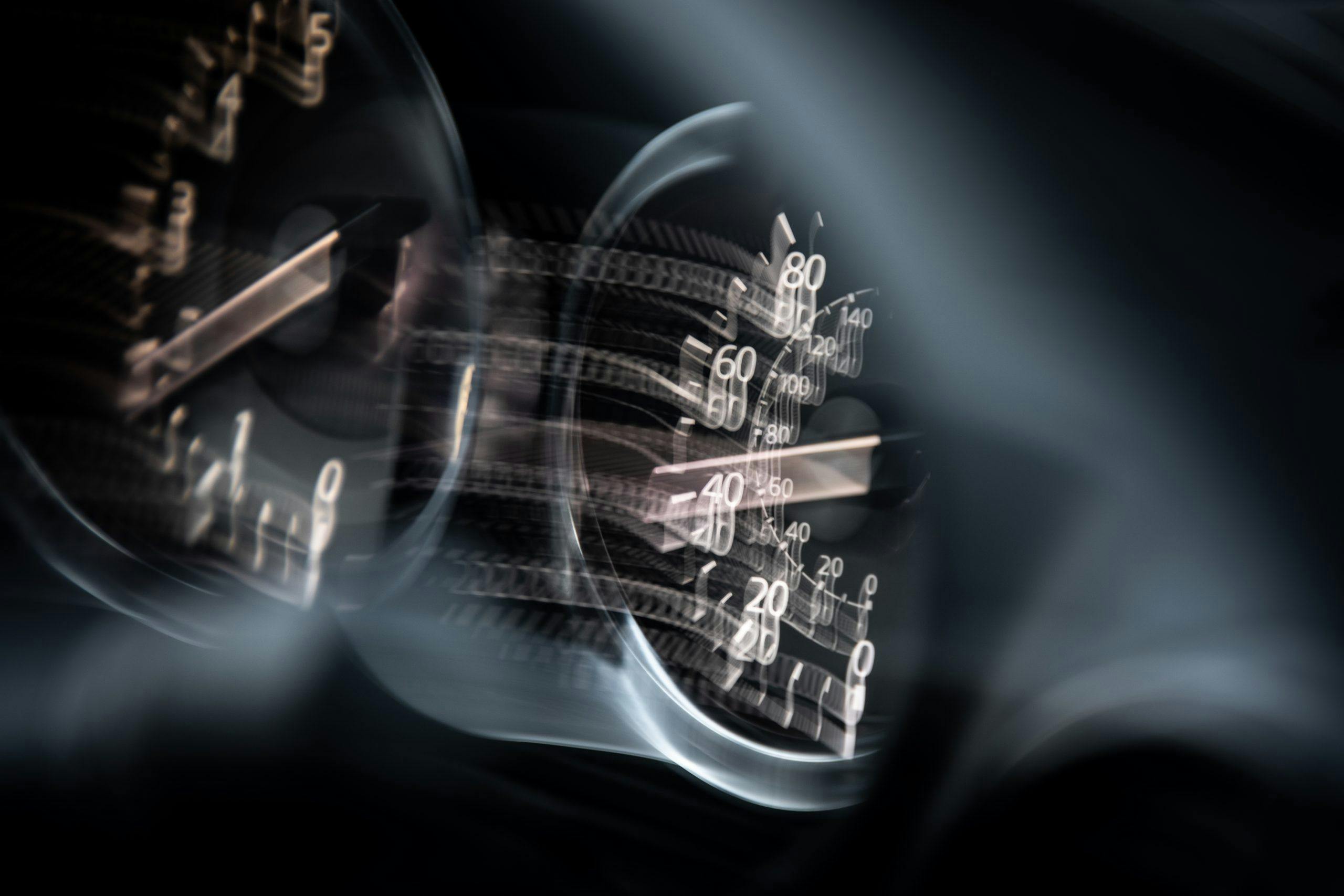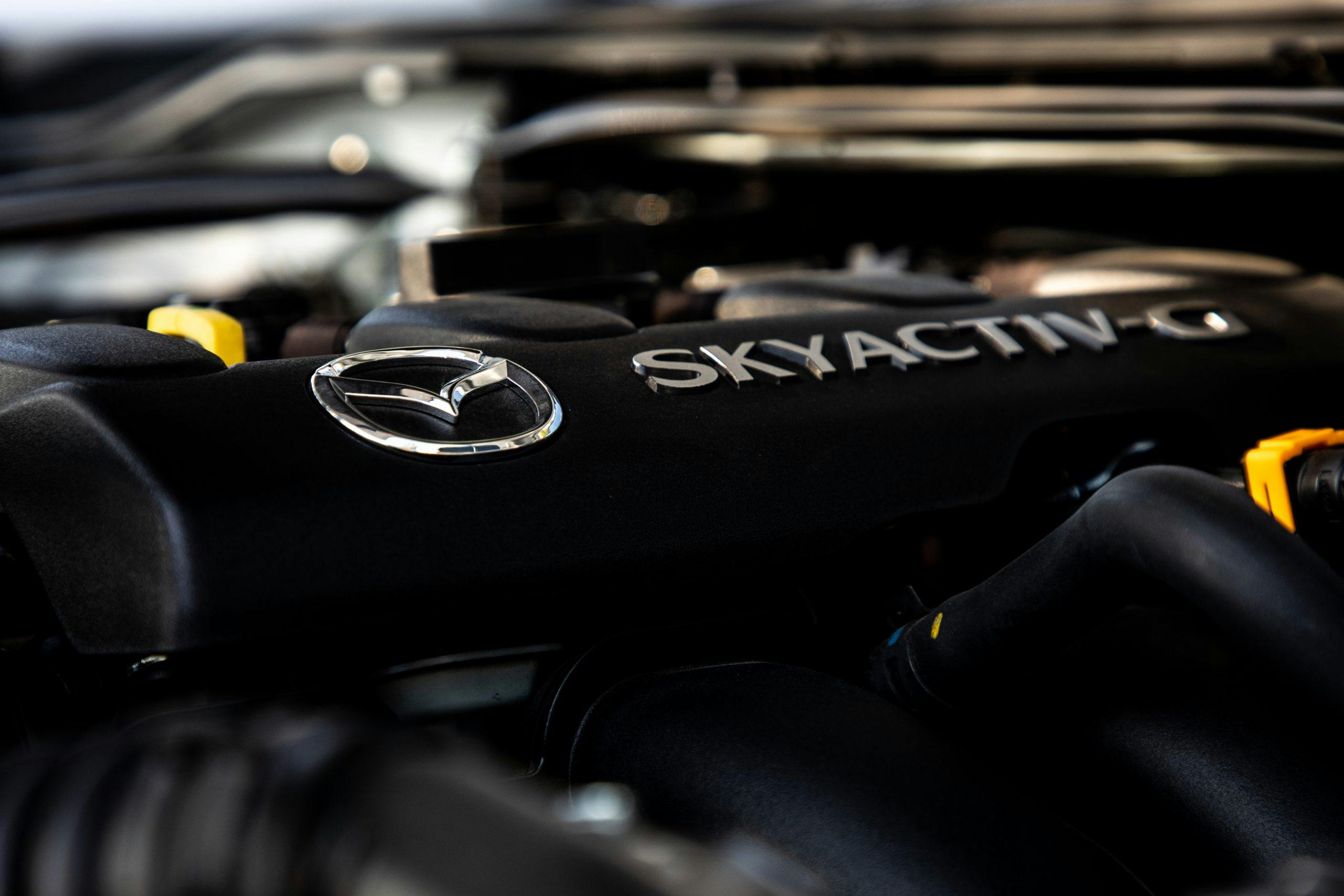Review: 2021 Mazda MX-5 Miata Club
Turn on any Major League Baseball game nowadays, and you’re sure to notice the absurd infield shifts, teams using six pitchers in nine innings, and batters literally swinging for the fences. Why? Because success in baseball’s modern era has become a matter of whose analytics department ran better algorithms that morning. Sure enough, sticking your third baseman in right field keeps that left-hander off the base paths with disturbing regularity. Five guys throwing an inning apiece keeps runs off the board. The long ball usually has enough upside that the alternative—a strikeout—is considered an acceptable risk. It’s hard to argue with today’s evolution of Billy Bean’s Moneyball; the results speak for themselves.
Effective, but not romantic. Numbers too often come at the expense of emotion. The cold, calculated baseball being played today seems a world apart from the lovable pastime most of us remember watching from the stands on a summer afternoon.
The auto industry is full of vehicles with ludicrous performance numbers; almost all of them nowadays feel similarly joyless. Feel and involvement have been slowly been whittled away in pursuit of tenths of seconds and miles per gallon. Manufacturers have spent decades pushing gas-powered cars to today’s ridiculous heights, only to have their entire industry upended by a South African meme-lord in Silicon Valley. When a four-door luxury sedan like the Model S can prove desirable to the rich, accelerate faster than most supercars, and do it with completely different technology, it forces every OEM to rethink things.

If any car stands a chance at keeping its identity going into the future, it’s the Mazda MX-5 Miata. From the beginning, it’s never been about lap records or drag strip time slips. And with north of a million units sold over four generations, this plucky Japanese roadster is obviously a roaring success. If numbers aren’t the point here, what is?
I thought about this question as I settled into the Arctic White Miata Club parked outside a hotel near the Los Angeles International Airport. The Hagerty digital media team had gathered for a day of driving Malibu’s canyon roads, with a group of cars that included everything from an off-road truck to a full-size luxury sedan. Among these cars, the Miata was the correct tool for the job. At $35,705 including the $4470 Brembo/BBS Recaro package, this test model is not the cheapest way to get behind the wheel of a new Miata, but it’s the most rewarding. The Club nets Bilstein monotube shocks, a limited-slip rear diff for manual-equipped cars, and a front shock tower brace for added stiffness. The Brembo/BBS Recaro package scores 17-inch BBS wheels, Brembo brakes, and heated Recaro seats.
This expression of the Miata is a refresh of the fourth-gen, ND roadster, known as the ND2. Anyone with seat time in a Miata knows that performance numbers don’t scratch the surface of the driving pleasure these cars offer, but in the ND2’s case a few figures do matter. First, 181: The horsepower produced by Mazda’s buzzy 2.0-liter free-breathing four-cylinder. The Miata’s update that arrived for the 2019 model year coaxed 27 extra ponies from the Skyactiv-G engine, courtesy of myriad tweaks—namely lighter pistons and connecting rods, a stiffer crank, and exhaust changes that helped the car exhale better. Second, 7500: The car’s redline, up 700 revolutions from the ND1 model, courtesy of the aforementioned lighter, stronger internals and a dual-mass flywheel. Finally, 2339: The curb weight in pounds of a three-pedal, soft-top ND2 Miata. The ND is just 189 pounds heavier than the original 1990 NA Miata, and more impressively, it’s some 150 pounds lighter than the car it replaces, the NC, which was already the lightest car sold in America in its day.

The car’s svelte proportions mean you wear the car more than ride in it. Taller drivers, such as 6-foot-3 Layout Editor Bryan Gerould, found the cabin a tad difficult to fold into, but even so the cabin isn’t uncomfortably snug. Dropping the top is just a flick of the wrist away, and the open air considerably reduces those cramped feelings.
Flitting from corner to corner is what a Miata was meant to do, and any qualms with the interior—say, the aging central infotainment system or general lack of useful storage—simply float out the back of the cockpit. What remains adds up to a unique driving experience in 2021: two seats, a small steering wheel, a notchy gearshift, three pedals, a naturally aspirated engine, and two driven wheels.

The climb up Las Flores Canyon road that morning was my first taste of the ND2 Miata in its element. These are tight, winding roads with a smorgasbord of corner types spread across startling elevation gain. The climb highlighted the new engine beautifully; there’s noticeably more grunt in the mid-range than before, which alleviates the need for constant shifting. Revs come eagerly and swiftly, and the increased redline proved a welcome invitation to explore the full tachometer as the Miata danced upward from the marine layer coating Malibu’s the lower hills and beaches.
The afternoon leg, a dash from famous seafood eatery Neptune’s Net up Yerba Buena Road to the trailhead at Sandstone Peak, was rife with sweepers and sharp hairpins. The Miata swallowed every inch of it, infecting whoever was driving it with joy. Senior Editor Jeff Peek described his time behind the wheel with the following: “More holy s**ts per mile than anything I’ve ever driven.”
Few cars engage a driver the way a Miata can. Even with that fortified engine, pace is still an exercise in balance. Listening. Feeling. Hands, feet, eyes, and ears work in concert to discern what inputs are required, whether it’s steering angle, brake, throttle, or a quick downshift. Body roll, never a stranger to Miata chassis engineers, is quelled here thanks to the Bilsteins but not absent entirely. You can still feel the car set as it enters a corner. Front end grip is remarkable, and the ND2’s backside only breaks loose under the most deliberate provocation.

In all the runs up and down the canyon, I never once glanced at the speedometer. Here, pace is a feeling not measurable in mph. In the right conditions, going the speed limit in this car can be more thrilling than going flat out down the back stretch of Mid-Ohio in something with three times the shove. The Miata is that second baseman whose small-ball base hits, timely bunts, and steals don’t make highlight reels. But they make all the difference game to game.
What’s most remarkable is that Mazda has preserved and even heightened this Miata characteristic over a production run of more than thirty years. In a conversation with Hagerty Insider‘s Managing Editor David Zenlea, Executive Editor Eric Weiner mentioned how so many of today’s cars get “better” on paper, but in practice, end up straying away from the essence of what made the originals so great. Consider today’s BMW Z4 versus the spritely Z3 of 20 years ago. Despite both being rear-drive, straight-six-powered convertibles, driving these cars back to back suggests zero sense of commonality. Not so with the Miata. Weiner put it plainly:
“This ND2 bests the NA in every possible measure, and yet it still is so recognizably a Miata. The proportions feel familiar. The sense of lightness and eagerness are there—it never takes itself too seriously or catches you by surprise.”
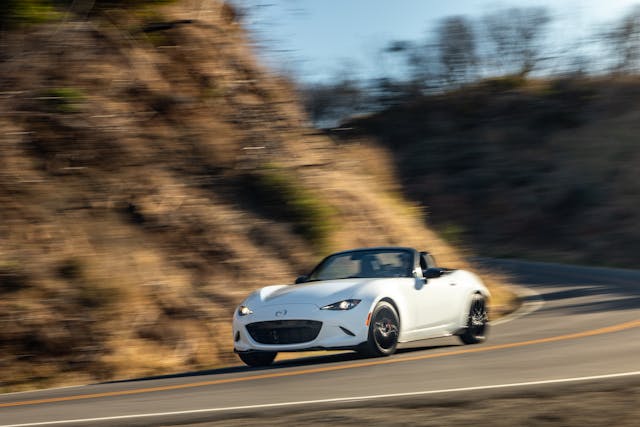
That smiley little NA spawned a whole generation of imitators—the Z3, Boxster, TT, SLK, S2000, GM’s Delta-platformed Pontiac Solstice and Saturn Sky, to name a few. Only the BMW and Porsche remain. Mazda’s engineers have, since the dawn of the first Miata, stayed true to their mission to provide an attainable, rewarding sports car experience.
If the sudden uptick in interest (and transaction prices) for even the roughest of Miatas is any indication, there are more than handful of enthusiasts waking up and realizing the days are numbered for analog cars like this. Young enthusiasts, as their seniors once did, see it as an approachable way to chase the most fundamental elements of driving. Older, wealthier collectors are beginning to appreciate the lowly Miata’s long-tail effect on the world of enthusiast cars, and they’re getting serious about sourcing cherry low-mile examples from all generations.

If you want to buy a new Miata, there’s maybe never been a better time than now. Go with a soft top and a manual gearbox. The Club’s handling upgrades are worth it, but even if the BBS/Recaro package seems too costly, the aftermarket is bursting with upgrades for every key component, should you seek something a bit more personalized. Adjusted for inflation, the 1990 Miata’s base MSRP of $13,800 is actually more expensive than the base 2021 Miata Sport’s $27,825 MSRP.
Is a pleasure car like this worth $35,000? Maybe cost-benefit isn’t the right approach to answering that question. Numbers don’t capture it. Test drive one on a clear day, on a good road, and be open to a little romance. The result will speak for itself.
2021 Mazda MX-5 Miata Club
Price: $31,235/$35,705 (base/as-tested)
Highs: Character by the fistful—the engine, the gearbox, the styling, all of it. The perfect blend of components and tuning to deliver an idyllic canyon carving experience.
Lows: Inflation adjustment notwithstanding, $36K out the door is not inexpensive. Pack lightly; storage is scarce. Large frames will need to stretch before ingress.
Summary: The car that spawned a host of competitors is still here and, remarkably, sticking to its proven playbook.
